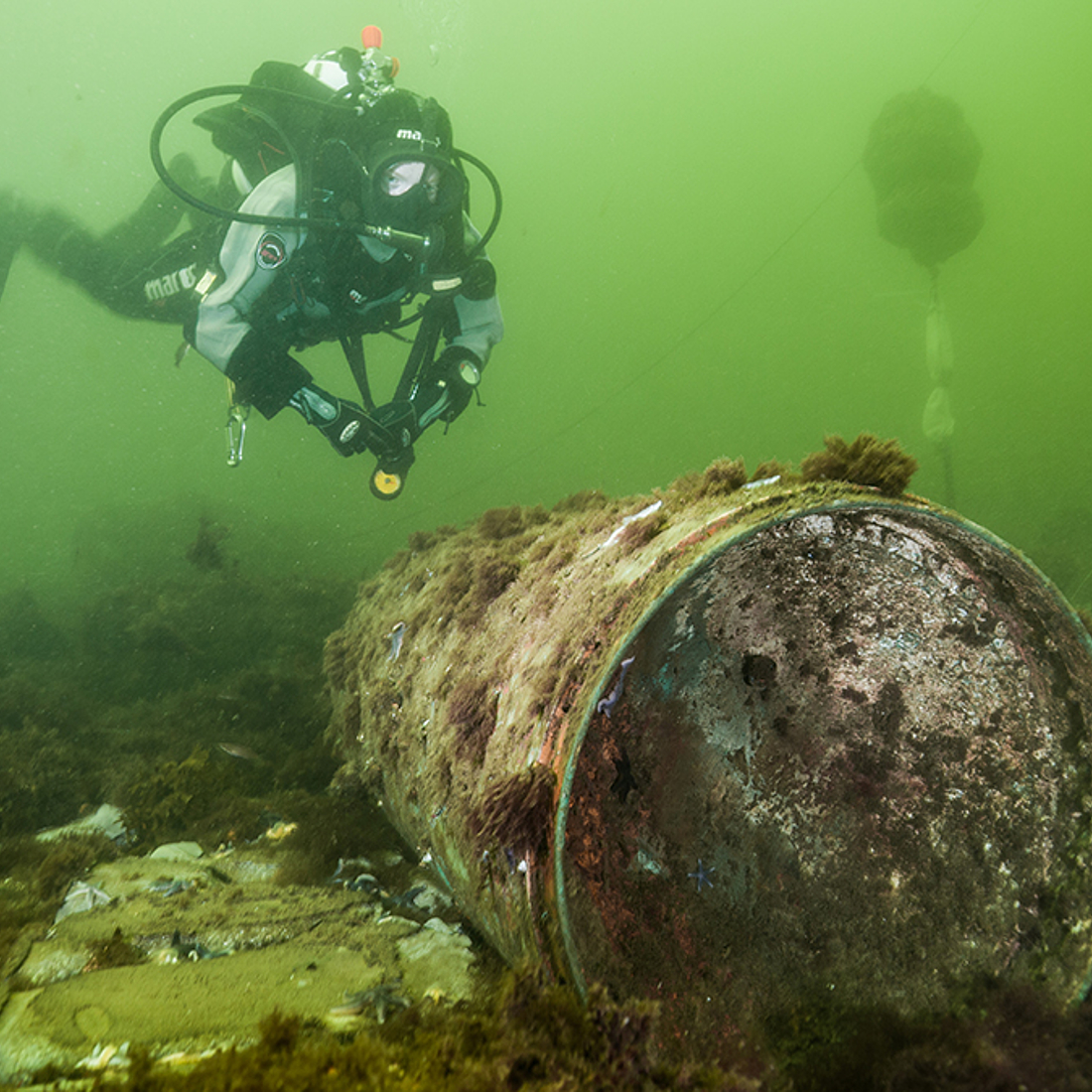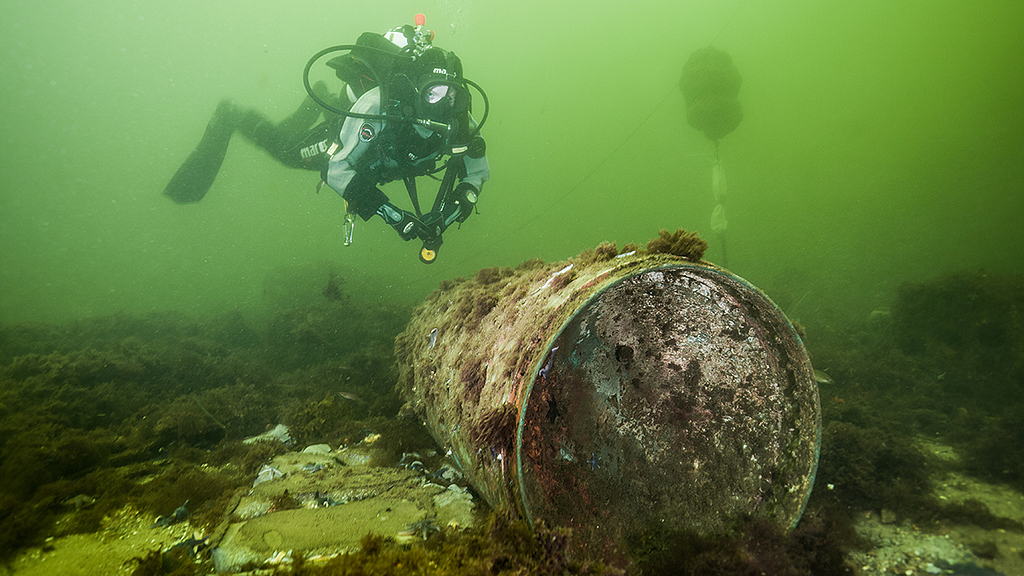Why is TNT dangerous?
Trinitrotoluene (TNT) is an explosive and is used for blasting. TNT was developed in 1863 by the German chemist Julius Wilbrand. Later it was further developed as an explosive in the German Reich and it became one of the most widely used explosives in both world wars.
Ever since these wars, TNT has been lying on the seabed for decades in the form of old munitions shells. Although they have been underwater for years these leftovers can still explode even today. This poses a serious danger to humans and the environment.
In addition, TNT is also toxic and can be ingested by marine animals when they eat other marine life that has been contaminated by the TNT. Humans could also be affected if they eat this contaminated fish and other seafood.
TNT and its metabolites also interfere with the growth or reproduction of various marine organisms. TNT is also harmful to humans, because its metabolites can cause cancer.
TNT and food safety
TNT can dissolve from munitions into the water and enter marine animals through their food sources. This starts with the smallest creatures such as plankton, algae and worms that in turn are eaten by larger ones, such as mussels, fish to seabirds, seals and porpoises.
In this way, TNT can end up in humans through eating contaminated fish and seafood. Scientists have already detected TNT metabolites in fish and mussels. But because these amounts are so small, there is no risk to human health at the moment.
What happens to TNT in the North Sea?
Fortunately, much of the TNT in the mines, bombs and torpedoes are still encased by a metal shell. However, these shells are gradually rusting and more and more of the explosive chemicals are dissolving into the water and thus is being distributed in the marine environment.
This increases the risk of damage to the marine ecosystem, but also to humans, if they eat contaminated fish and seafood. Without the metal shells, the detection of these explosives also becomes much more difficult. Therefore, action must be taken now to protect the sea and humans. Further information about TNT and survey methods to detect TNT see Station 4 - Hazards in mussels.
Partner
-


